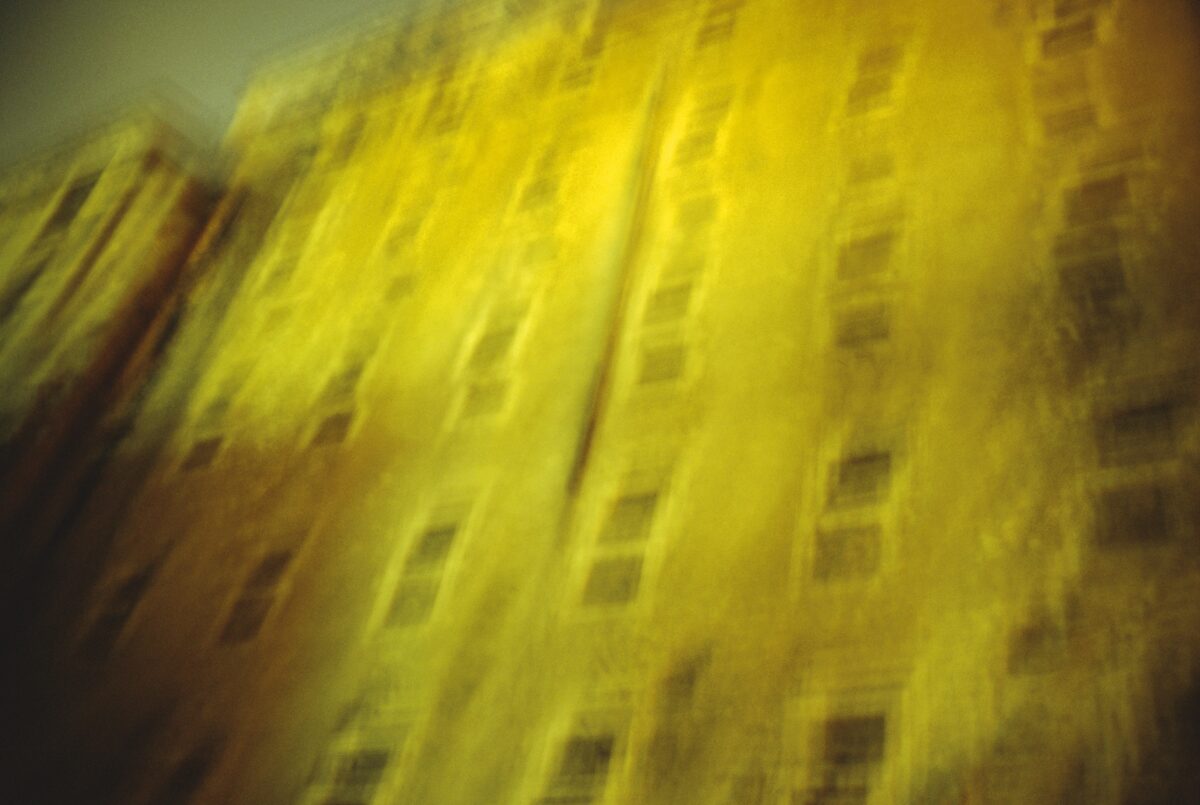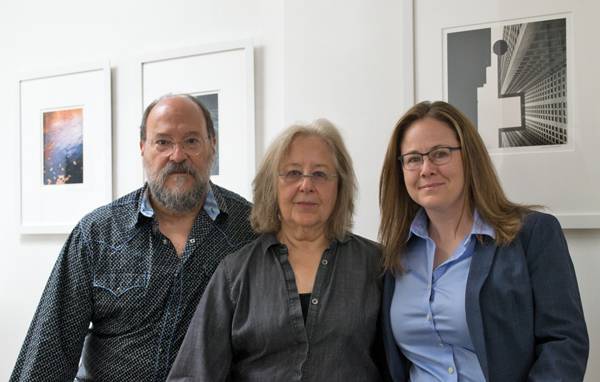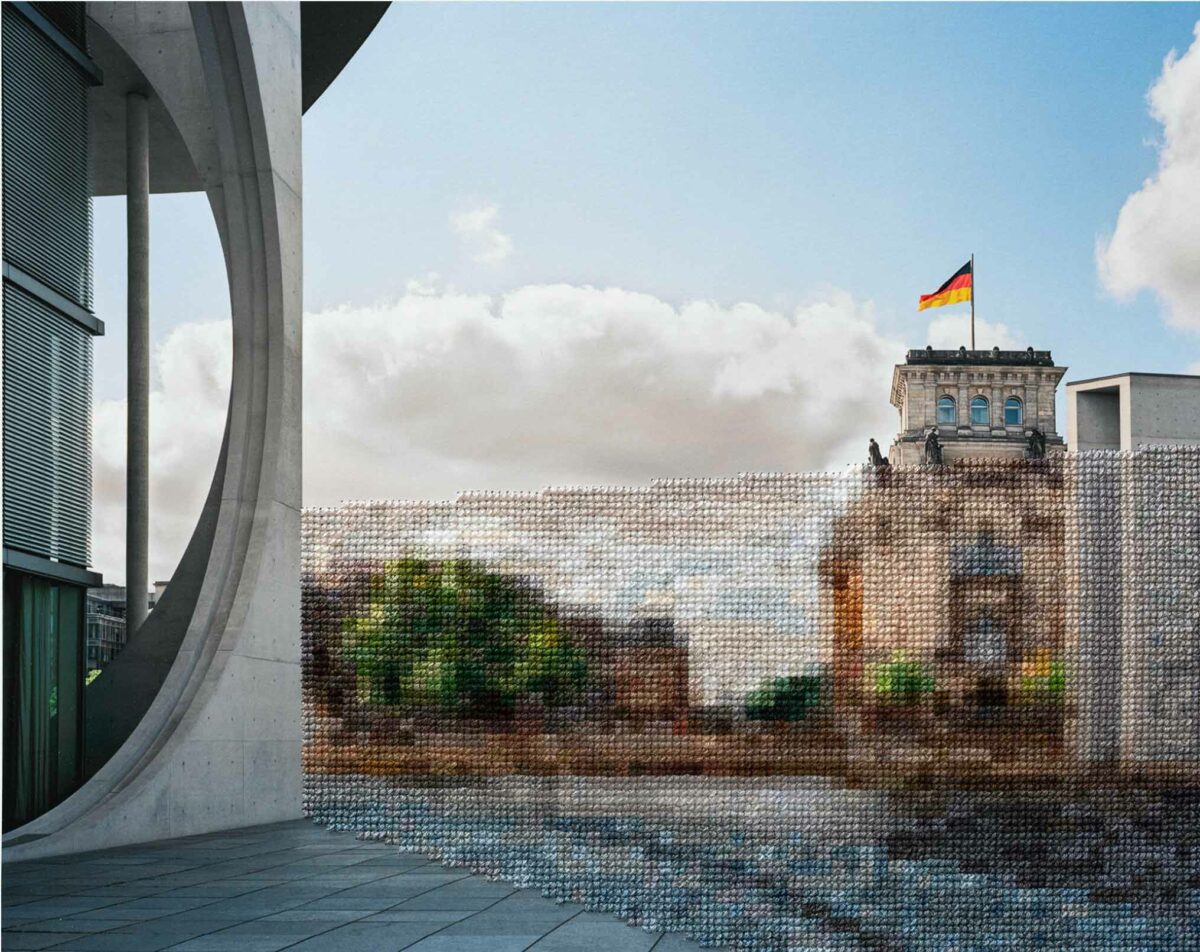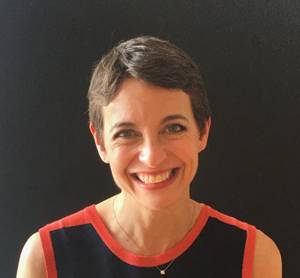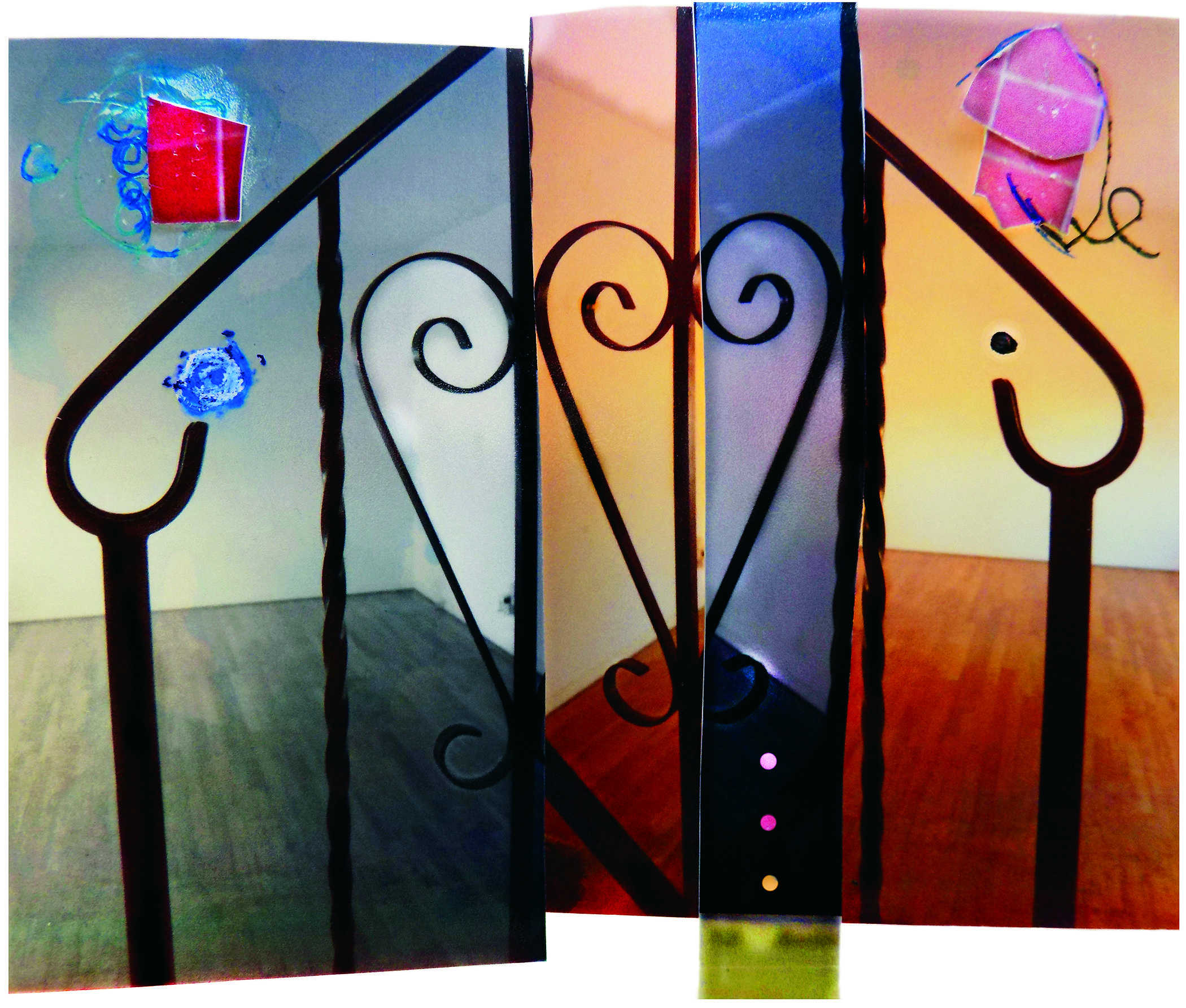

The ostensible subjects of Gerald Slota’s latest photographs are the essential but overlooked things that keep a house working: pipes, a utility meter, a hook-and-eye latch, an outlet. But – these being photographs by Gerald Slota – images that originated as straightforward snapshots of simple things wind up being anything but simple. Instead, they are sweetly cryptic pictures, at once domestic and surreal.
Photo editors often contact Slota to illustrate a particular kind of magazine story – about bipolar kids, say, or a haunted house. His approach, which involves tearing or cutting photographs, sometimes with pinking shears, and scratching and drawing on their surfaces, tends to produce dark, unsettling imagery.


But his latest photographs, though made with similar methods, are more colorful and more minimal than previous series. A few of them verge on abstraction. They were made shortly after Slota’s father died (the show at Ricco/Maresca was called simply After), when he took hundreds of snapshots of the rooms in his father’s house. Back in his studio, he began collaging, reshooting, and marking and cutting the prints: a hand-drawn black line zig-zags down a yellow peg board in one; in another, triangular pinkish shapes rupture the picture plane of pale green, delicately flowered wallpaper. Two photographs of a curved iron railing – one in color, one in black and white – fit together to suggest the outline of a peaked roof in a child’s drawing of a house. The practice of combining black-and-white and color prints has the effect of juxtaposing alternate versions of reality. What is fact and what is fiction? How reliable is a photograph, and more to the point in this work, how reliable is memory?
Slota’s pictures have always had something purposefully childlike about them, whether it’s the scrawled figures or the cut-and-paste appearance, but that aspect is all the more poignant in these new photographs. Earlier work may have alluded to fairytales or archetypal memory; these photographs derive from a more personal sense of place, and loss, and the atmosphere of urgency and experimentation feels new.



